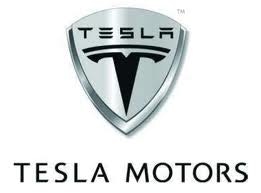Last month, the electric-car industry passed a small but important milestone. There are now more than 100,000 electric cars on America’s roads, including those that operate as plug-in hybrids. That’s happened in just two and a half years, as electric-vehicle sales have only been tallied independently since the last month of 2010, when a mere 345 were first parked in customer garages.
Despite this milestone, there’s plenty of pessimism to go around regarding the adoption rate of the plug-in EV, which have thus far made up only half of 1% of all cars sold in the U.S. this year. My fellow Fool — and resident Foolish auto expert — John Rosevear offered a succinct overview of that pessimism a couple of months ago, which I’ll sum up as this: There’s no charging infrastructure, and the batteries make EVs cost more than is justifiable.
Does that mean EVs are a failure?
From the perspective of the broader auto market, and when compared to the ambitious one-million-EV goal set by President Obama for 2015, EV hype seems destined for the junkyard. However, from a historical perspective, EVs aren’t doing so badly at all. In fact, most of the common complaints about EVs are simply short-sighted or downright wrong when viewed through either a historical lens or one with a longer time horizon for the future. Let’s take a look now.
Historical perspective on the auto industry
The American auto industry effectively began in 1896 with a 13-vehicle production run at the Duryea Motor Wagon plant (or garage, as the case might well be). Three years later, just before the start of the 20th century, there were roughly 8,000 cars on what passed for American roads — virtually nothing was paved for vehicle travel. There were 8,000 EVs on the road after eight months of tracking. That’s not really fair, though, because there are more than three times as many people in the U.S. as there were at the turn of the 20th century. Adjusted for population growth, there should have been 33,000 EVs on the roads after three years. That happened after 19 months, and we’re now approaching three times that number midway through the third year of tracking. In fact, EVs are outperforming hybrids at the same point after adoption as well. Here’s what that looks like:
Automobile Adoption Rates | Create infographics
I included battery-only EVs on the chart to prove I wasn’t fudging the numbers on EV adoption by using plug-in hybrids — battery-only EVs surpassed the population-adjusted sales pace of the earliest cars with eight months to go in their third year of tracking. It’s also worth pointing out that battery-only EVs have outsold plug-in hybrids by more than 1,000 vehicles for each of the past three months and are on track to reach a cumulative total of roughly 68,000 sales at the end of the year.
Why compare EVs with the earliest cars? The “motor wagons” of the late 1800s faced similar challenges to those often attributed to EVs: minimal supporting infrastructure and a high price tag relative to the dominant (horse-drawn) transportation of the day.
The first gas stations wouldn’t even be built until almost a decade after the Duryeas built the first 13 cars in America, and they had no drive-up pumps — that innovation didn’t arrive until 1913. There are already more than 6,000 publicly accessible EV charging stations in the country. This doesn’t count interesting infrastructure developments such as Tesla Motors Inc (NASDAQ:TSLA)‘s battery-swap stations or its growing network of “superchargers” scattered across the United States. It’s also worth noting that EVs, unlike early internal-combustion vehicles, can get recharged in most owners’ garages.



